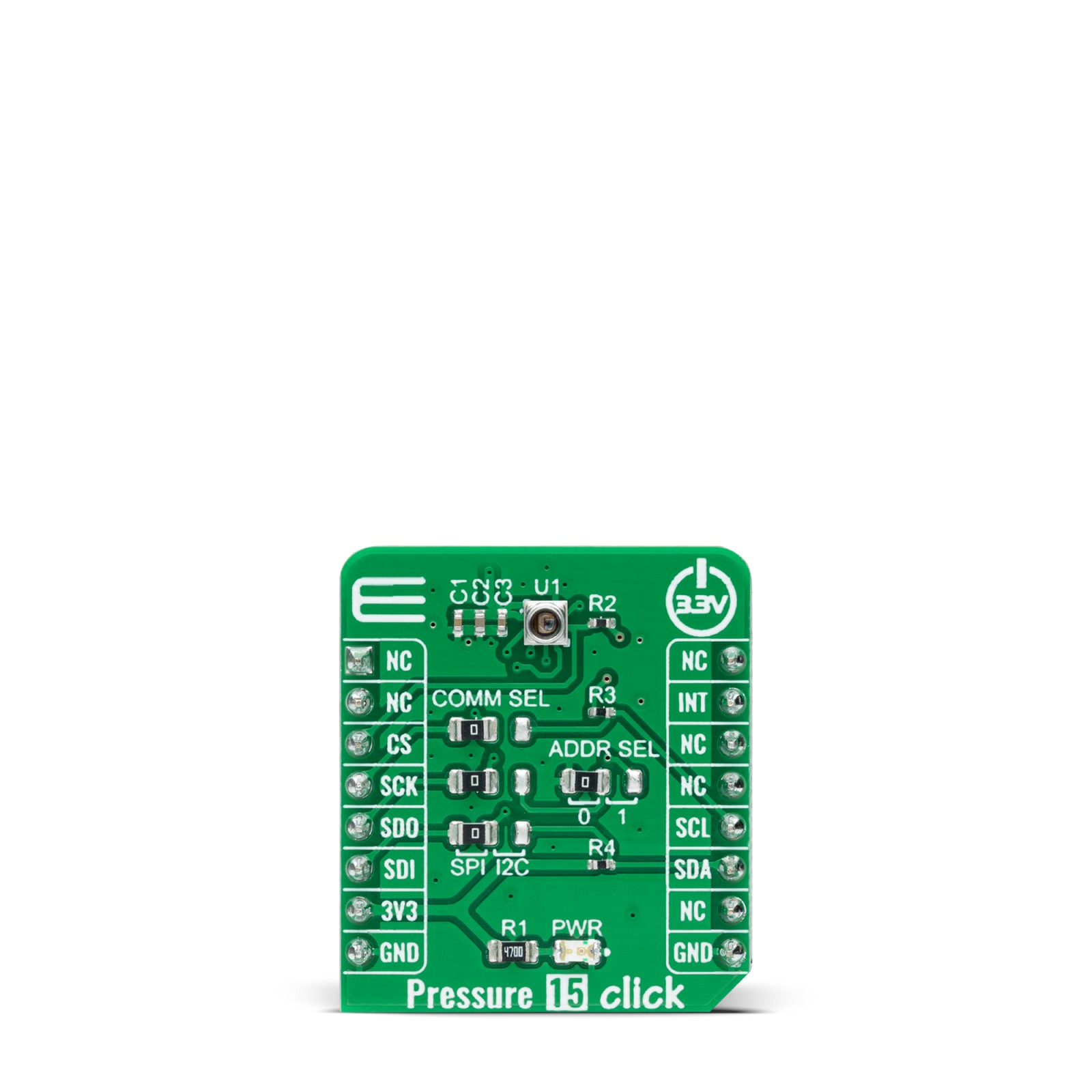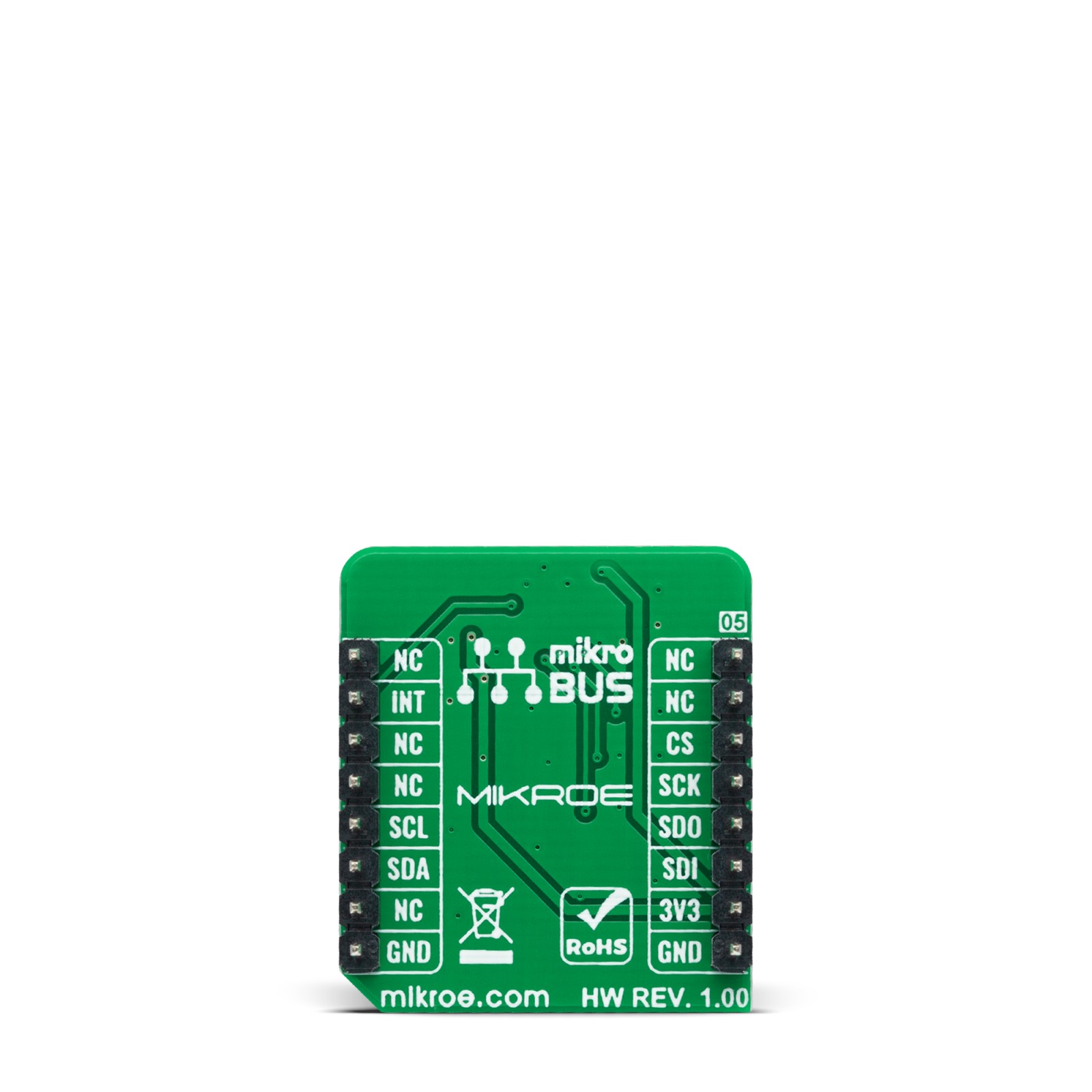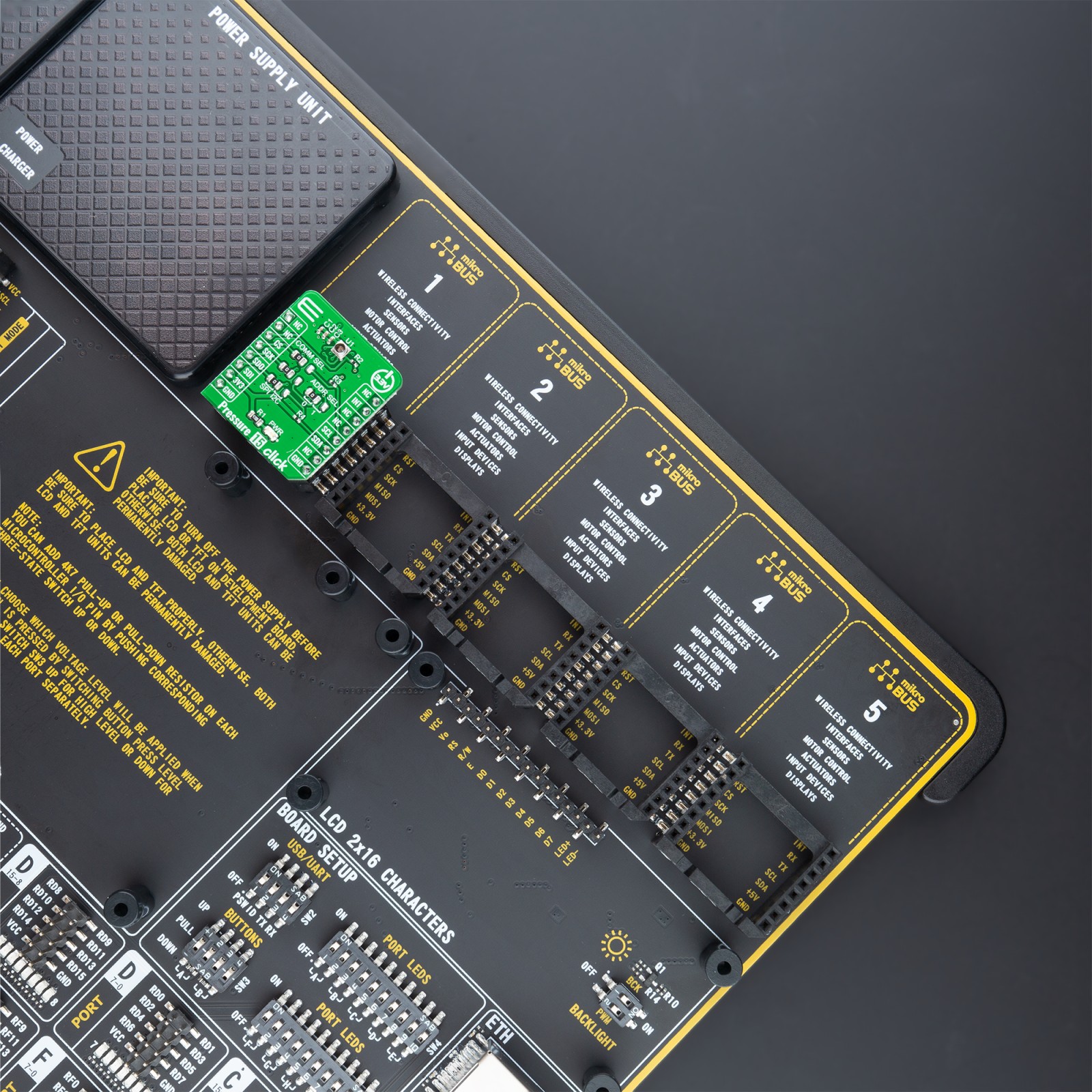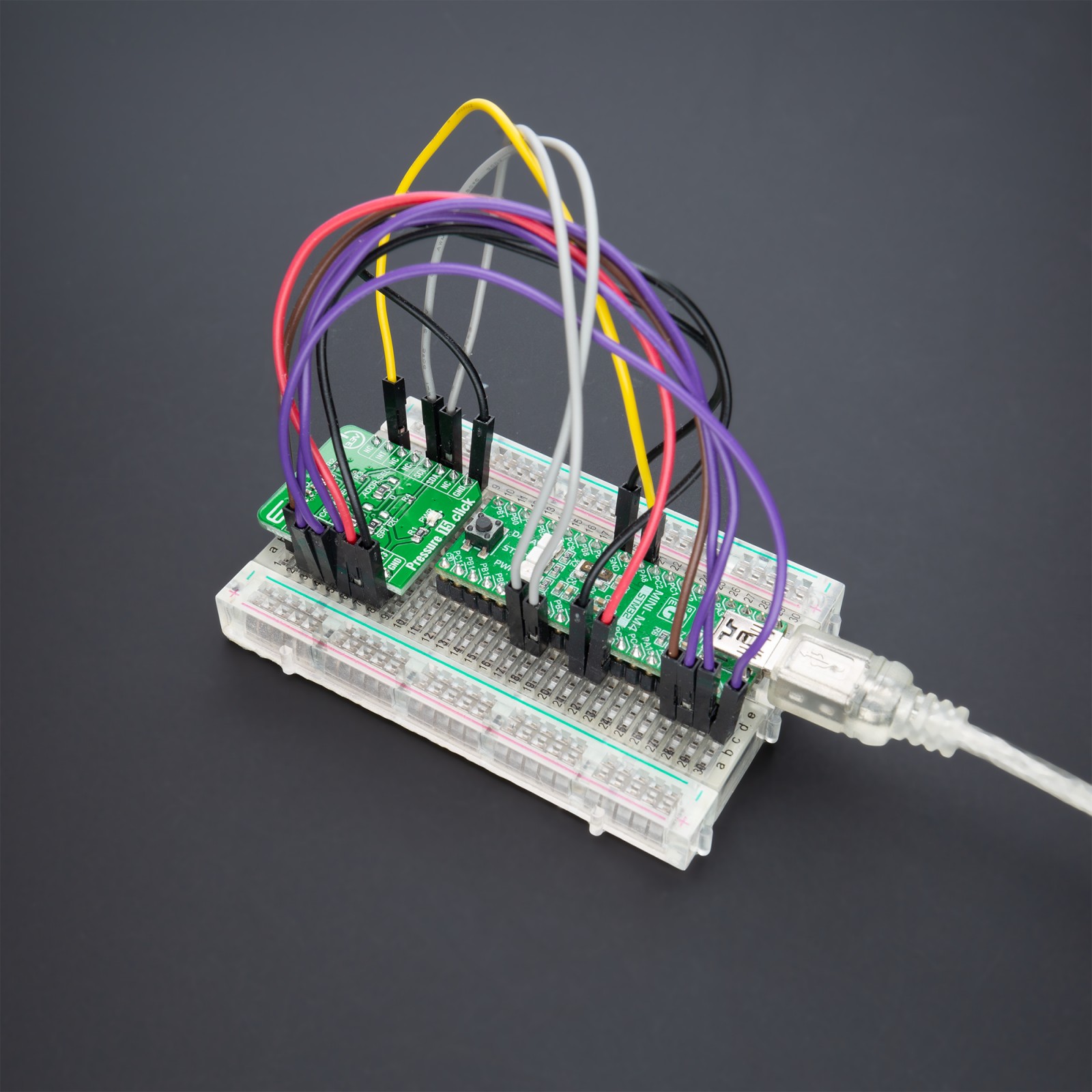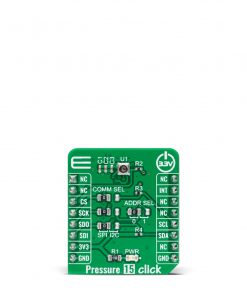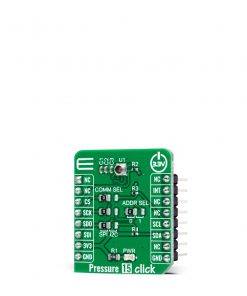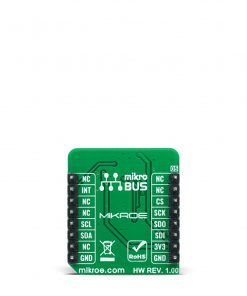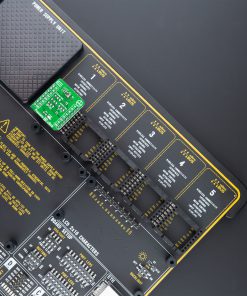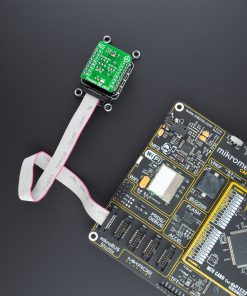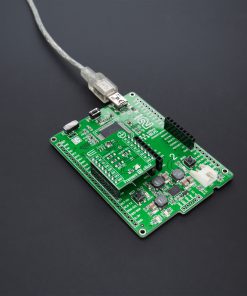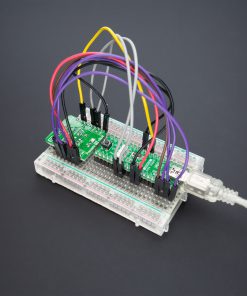Pressure 15 Click
R700.00 ex. VAT
Pressure 15 Click is a compact add-on board that contains a board-mount pressure sensor. This board features the LPS27HHW, an ultra-compact piezoresistive absolute pressure sensor that functions as a digital output barometer from STMicroelectronics. The device comprises a sensing element and an IC interface that communicates through I2C or SPI serial interface from the sensing element to the application. The sensing element, which detects absolute pressure in a range of 260 up to 1260hPa, consists of a suspended membrane manufactured using a dedicated process developed by STMicroelectronics. This Click board™ is suitable for weather station equipment, altimeter and barometer applications, industrial, consumer applications, and many more.
Pressure 15 Click is supported by a mikroSDK compliant library, which includes functions that simplify software development. This Click board™ comes as a fully tested product, ready to be used on a system equipped with the mikroBUS™ socket.
Stock: Lead-time applicable.
| 5+ | R665.00 |
| 10+ | R630.00 |
| 15+ | R595.00 |
| 20+ | R572.60 |

